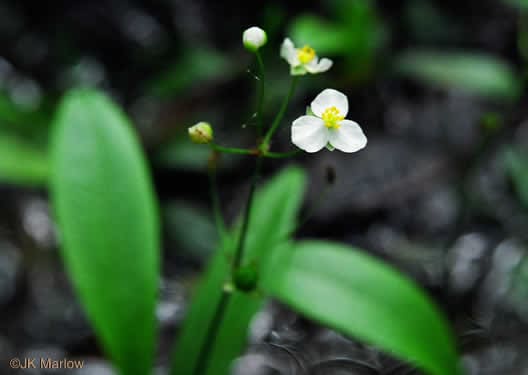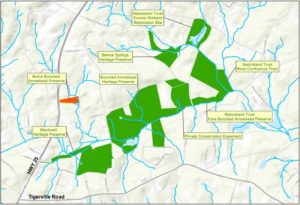Bunched arrowhead, Sagittaria fasciculata, is very rare, growing in just a few Piedmont Seepage Forests in North and South Carolina. The seepage habitat in which Sagittaria fasciculata occurs is extremely threatened, and remaining populations are threatened by residential and industrial development, conversion to pasture, and invasive exotic species.
The plant is a small (about 15 inches), herbaceous plant that blooms from late April through July. It’s the only member of the Sagittaria genus that doesn’t have arrowhead-shaped leaves. Submerged leaves are long and narrow, round in cross-section. Emerging leaves are flat, broadly ovate or lanceolate.
Conservation:
Sagittaria fasciculata is federally-listed as endangered and the principal strategy for its survival and recovery as determined by the USFWS is protection of existing populations and their habitat.
Local residents, state, local, and federal agencies, nonprofit groups, and generous contributors have worked to protect the Bunched Arrowhead. A number of preserves have been created by the South Carolina Department of Natural Resources and local conservationists in the headwaters of the Enoree and Tygers Rivers in Greenville County.
Visit the Bunched Arrowhead Heritage Preserve in near Travelers Rest to see the plant, and watch the SCNPS calendar for opportunities to help with the ongoing restoration efforts!
The Bunched Arrowhead Burns Tract compliments of Naturaland Trust
To learn more:
- Bunched Arrowhead Preserve, SCDNR Public Lands
- Sagittaria fasciculata, NC Gardener Extension Toolbox
- Burns Bunched Arrowhead Preserve, Naturaland Trust
Photo compliments of Janie Marlow c/o NameThatPlant.org




